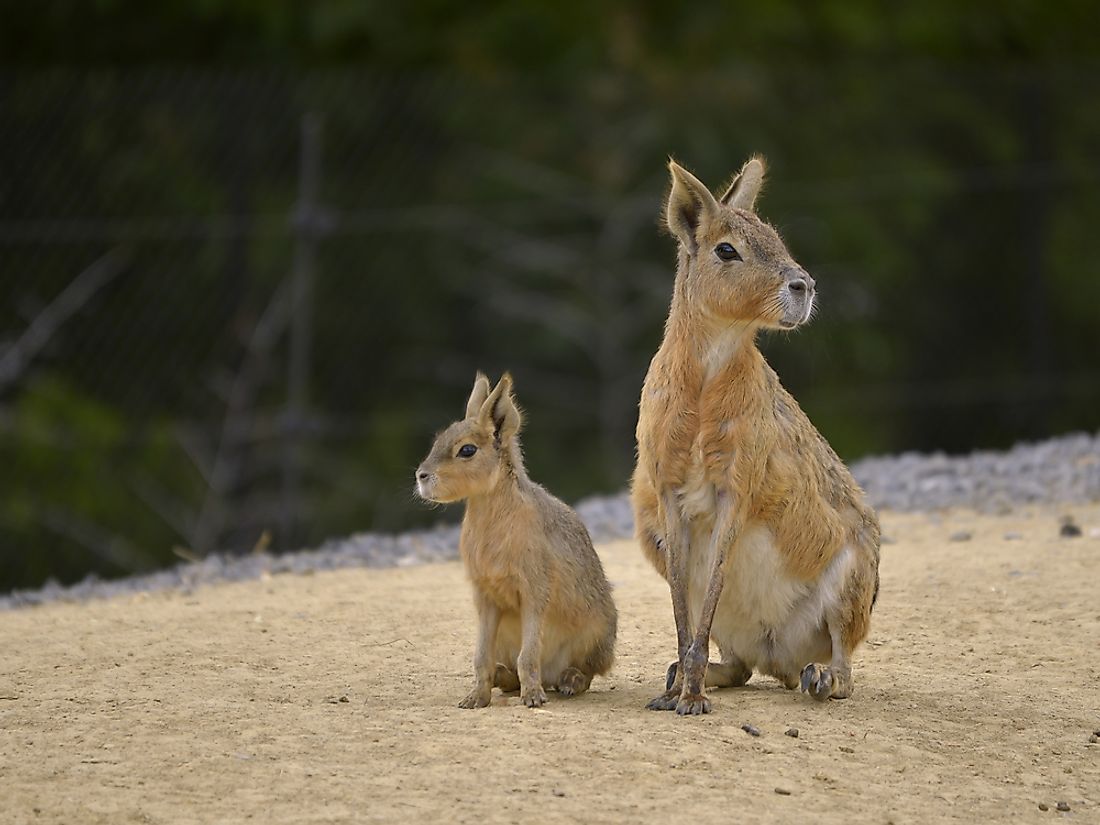Interesting Facts About The Patagonian Mara

What Is the Patagonian Mara?
The Patagonian mara, also known as the Patagonian hare or cavy, is a large rodent species that is often said to look like a cross between a rabbit and a deer, or other hoofed animal. This animal grows to a length of between 27 and 30 inches with a short tail of around 2 inches on average. Its physical appearance is marked by its long front legs, large ears, and muscular back legs that are perfect for hopping. Its feet are distinctive in shape as well, with a rounded and compact shape that makes them appear to be hoof-like at first glance. Additionally, the head of this species is elongated with a slightly rounded snout that is similar in shape to the head of a kangaroo. The Patagonian mara is covered in a course, brownish-grey fur. Its underbelly, snout, and eyelids, however, are covered in white fur. In captivity, this species has been recorded to live up to 14 years.
Where Does the Patagonian Mara Live?
The Patagonian mara has only ever been reported in Argentina. Here, this species inhabits large, open grasslands and can be found across significant expanses of the Patagonia region. The Patagonian mara travels in pairs (as it maintains the same mates for life) and the two may cover a territory of around 242 acres on average. The male Patagonian mara is particularly protective of his partner and exhibits the unique behavior of marking her and the area around her with his urine. This practice creates a territory around the female Patagonian mara that moves with her, warding off potential rivals or competitors. Additionally, mating season for this species occurs between August and January, with litters born approximately 100 days after fertilization. When the young are born, the Patagonian mara may live in communal burrows of up to 44 adult individuals (or 22 pairs). Within its habitat, this species relies on grass and grass-like plants as its primary food source, although it has also been recorded eating fruits, seeds, and flowers. Interestingly, the Patagonian mara may consume its waste in order to ensure optimum nutritional consumption.
Threats Faced By the Patagonian Mara
Previously, the Patagonian mara population could be found across a much larger region of South America, stretching from the Patagonia region of Argentina to the Tierra del Fuego region of Chile. A number of factors have contributed to its reduced habitat range; most of these factors have primarily been caused by human activity. One example of the damage caused by human activity is the increasing number of development projects that have resulted in significant habitat destruction throughout its original range. Additionally, this species has largely been valued by humans for its fur, which is coveted for household items like bed linens and area throw rugs. This demand for fur has resulted in overhunting of the species, which has, in turn, caused a significant decrease in population. Because of these factors and the fact that this species in now extinct in some regions of its original range, the IUCN has listed the Patagonian mara as a near threatened species.







